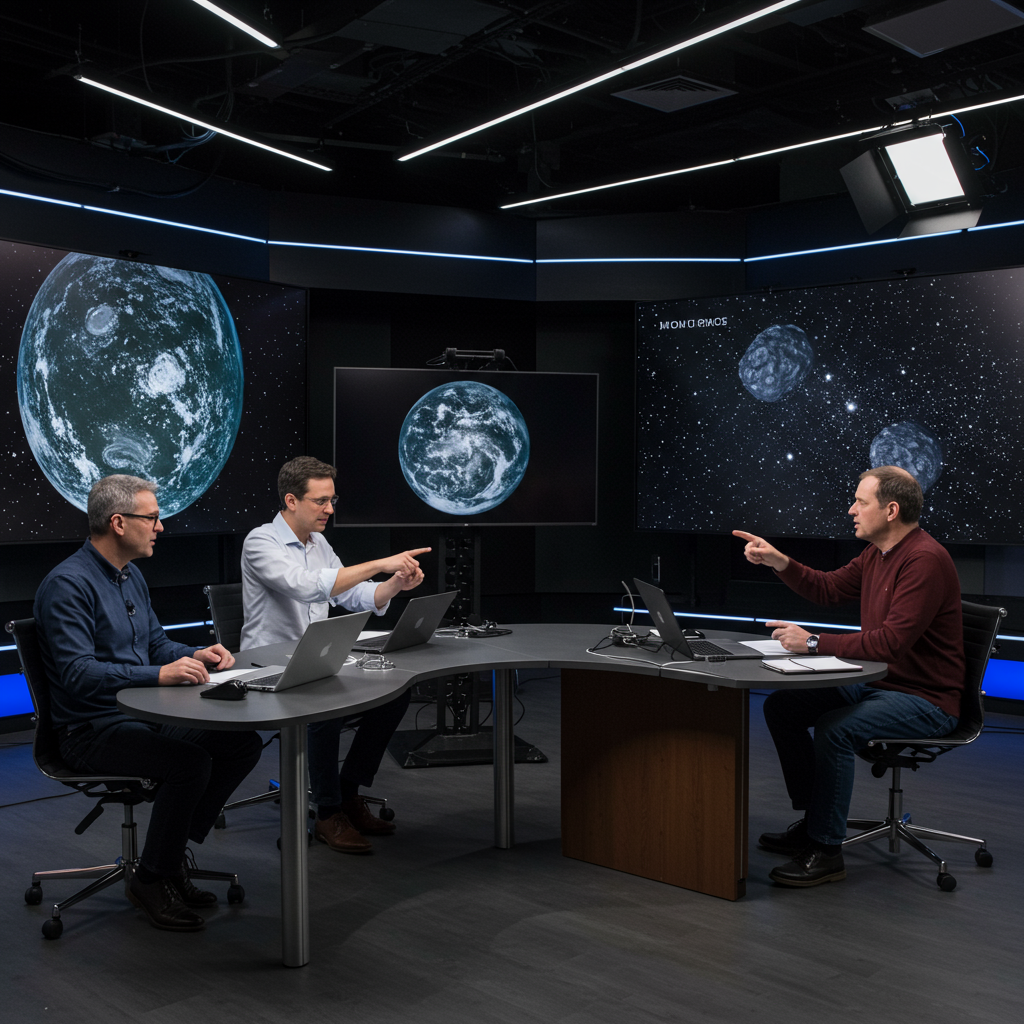In an increasingly complex world, understanding the fundamental building blocks of reality—from abstract mathematical structures to the very nature of intelligence—is paramount. This article bridges seemingly disparate fields: the profound insights of mathematicians like Grothendieck, the principles of information theory, and the practical application of these ideas in artificial intelligence (AI) and human decision-making. We’ll explore how concepts of measure, sameness, and abstract spaces provide a robust framework for navigating the future, building smarter systems, and making superior choices.
Quantifying Reality: Measure, Metric, and Sameness
To understand anything, we must first be able to quantify it. This is where the concepts of measure and metric become crucial. A “measure” assigns a numerical value to a size or extent, like the volume of water in a glass or the probability of an event occurring. It allows us to compare and understand quantities in a structured way. For example, in data science, measuring the “distance” between data points helps algorithms cluster similar items.
A metric takes this further, defining the “distance” or dissimilarity between two points in a space. Think of it like measuring the actual distance between two cities on a map. This isn’t just about physical space; metrics can define how different two images are, how related two pieces of text are, or even how dissimilar two human preferences might be. Understanding sameness or similarity, then, becomes a foundational step for any analytical endeavor, from recognizing faces in a crowd to categorizing complex data sets for machine learning. Without robust ways to measure and compare, any attempt to build intelligent systems or make informed decisions would be baseless.
The Role of Information Theory
Central to quantifying and understanding “sameness” and complexity is information theory. Pioneered by Claude Shannon, this field provides a mathematical framework for quantifying information, communication, and uncertainty. It defines information not by its meaning, but by its unpredictability. More surprise means more information.
This theory offers invaluable tools for understanding:
Data Compression: Reducing redundant information.
Error Correction: Ensuring reliable data transmission.
The Limits of Communication: How much information can truly pass through a channel.
In the context of AI, information theory helps design efficient algorithms, understand the redundancy in neural networks, and quantify the information gain when a model learns new patterns. It’s also vital for decision-making, as it helps us assess the value of new information in reducing uncertainty, enabling us to make better, more informed choices.
Grothendieck and Topos Theory: Abstracting Understanding
While “measure” and “information theory” deal with quantifying and communicating information, mathematician Alexander Grothendieck introduced profoundly abstract ways to understand structure itself. His work, particularly in topos theory, might seem distant from daily life or even practical AI, but it offers a powerful lens for modeling highly complex and dynamic systems.
Grothendieck’s approach was about finding deep, underlying structures (categories) that connect seemingly disparate mathematical objects. A topos can be thought of as a generalized “space” where one can do mathematics. Unlike traditional geometric spaces, a topos can encompass a vast array of logical, algebraic, and geometric properties. This abstract framework allows for:
Modeling Evolving Systems: Toposes can represent systems where “truth” or “objects” change over time or across different perspectives.
Unifying Concepts: They can provide a common language to describe structures across different fields.
Handling Uncertainty and Context: Their flexible nature allows for a more nuanced representation of relationships than traditional set theory.
Implications for Intelligence and AI
How does this relate to the nature of intelligence or AI? If intelligence involves understanding complex, evolving relationships and making sense of diverse inputs, then a framework like topos theory offers a potential mathematical language for describing such cognitive processes. For example:
Could a topos describe the “space” of human knowledge or the evolving states of an AI’s understanding?
Might the “relationships” within a topos model the intricate connections in a neural network or a cognitive architecture?
While highly theoretical, this deep abstraction encourages us to think beyond conventional models, pushing the boundaries of how we define and build AI that can truly reason, adapt, and learn in uncertain, dynamic environments. It’s about finding the fundamental patterns in chaos.
The Nature of Intelligence: Beyond Pure Calculation
What truly defines intelligence? It’s more than just processing information or performing calculations. Human intelligence encompasses creativity, empathy, intuition, and the ability to learn from sparse data, adapt to novel situations, and understand context. While AI has made incredible strides in pattern recognition, data processing, and even generating creative content, it often operates differently from human cognition.
Current AI systems, particularly those based on deep learning, excel at identifying patterns within vast datasets. They can classify images, translate languages, and even beat grandmasters at chess. However, their “understanding” is often statistical, lacking the common-sense reasoning and causal inference that humans exhibit effortlessly. The future of AI hinges on developing systems that can move beyond correlation to causation, handle ambiguity, and operate with a deeper, more human-like understanding of the world. This requires integrating insights from cognitive science, philosophy, and yes, even abstract mathematics like those from Grothendieck’s work, to build more robust and generally intelligent systems.
AI and the Future: Guiding Good Decisions
As AI becomes more integrated into every facet of society, its impact on the future is undeniable. From autonomous vehicles to medical diagnostics and financial algorithms, AI is increasingly involved in critical decision-making. This presents both immense opportunities and significant challenges.
The ability of AI to analyze vast quantities of data at speeds impossible for humans offers tremendous potential for improving outcomes in various fields. However, for AI to truly contribute to “good decisions,” several factors are critical:
Transparency and Explainability: Understanding why an AI made a particular decision is crucial, especially in high-stakes applications.
Bias Mitigation: AI systems learn from data, and if that data is biased, the AI’s decisions will reflect and even amplify those biases.
- Ethical Frameworks: Developing clear ethical guidelines for AI development and deployment is essential to ensure beneficial and responsible use.
The principles of information theory can help quantify uncertainty in AI predictions, guiding humans to understand the confidence levels of the system. Concepts of “measure” and “metric” become vital for evaluating AI performance and ensuring its outputs are fair and accurate. Ultimately, the future of human-AI collaboration depends on building trust and ensuring that AI serves to augment, rather than undermine, human well-being and sound judgment.
How to Make Good Decisions: A Synthesized Approach
Making consistently good decisions is a skill that blends intuition with data-driven reasoning. Drawing on the principles discussed, we can adopt a more robust approach to navigating personal and professional challenges:
By integrating these perspectives, from foundational mathematics to the cutting edge of AI, individuals and organizations can cultivate a powerful framework for making good decisions—ones that are informed, adaptable, and ethically sound. The journey towards better judgment is a continuous process of learning, measuring, and refining our understanding of the world and ourselves.
Frequently Asked Questions
How do abstract mathematical concepts like topos theory influence our understanding of AI and intelligence?
Abstract mathematical concepts, particularly topos theory, provide frameworks for modeling complex systems that go beyond traditional set theory. While highly theoretical, a topos offers a generalized “space” for defining relationships and structures that can evolve or depend on context. This can influence AI by inspiring new ways to represent knowledge, model learning processes in dynamic environments, or even define what “understanding” means in an artificial system. For intelligence, it suggests a path to describe how diverse concepts and logical structures interrelate and adapt, potentially leading to more flexible and robust AI architectures that mimic human-like reasoning.
What practical resources or fields of study offer deeper insights into applying information theory for better decision-making?
To apply information theory for better decision-making, explore fields like Bayesian inference, which uses probability to update beliefs based on new information, directly leveraging information theory principles. Decision theory itself is a rich field that provides structured approaches to making choices under uncertainty. Resources include academic texts on statistical learning, data science courses focusing on entropy and mutual information, and books on cognitive biases that illustrate how humans often deviate from information-theoretically optimal decisions. Exploring real-world applications in finance, engineering, and medical diagnostics can also provide practical insights.
In what ways can understanding the core “nature of intelligence” inform our strategies for future AI development and ethical use?
Understanding the core nature of intelligence is crucial for future AI development. If we view intelligence as adaptability, problem-solving in novel situations, and understanding context (rather than just pattern matching), it shifts AI strategy towards building systems capable of true reasoning, causal inference, and common sense. For ethical use, this understanding helps us identify the limitations of current AI—e.g., its lack of genuine empathy or moral reasoning—and encourages the development of AI that augments human capabilities rather than replacing critical human judgment. It fosters a focus on AI that is explainable, fair, and aligned with human values, ensuring technology serves humanity responsibly in the long run.
Conclusion
The pursuit of good decisions, the understanding of intelligence, and the development of powerful AI are deeply intertwined with foundational concepts from mathematics and information theory. From quantifying reality with measures and metrics to leveraging the profound abstractions of Grothendieck’s topos theory, these seemingly disparate fields offer a unified lens through which to comprehend and shape our future. By embracing a holistic approach that integrates abstract insights with practical applications, we can build more intelligent systems, navigate complexity with greater clarity, and ultimately make choices that lead to more desirable outcomes for individuals and society as a whole. Continue to question, to measure, and to connect the dots between the known and the unknown, for therein lies the path to true understanding and wise decision-making.



